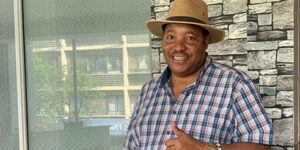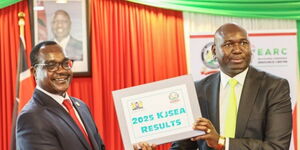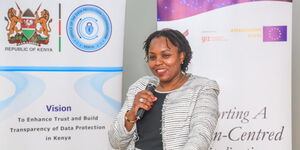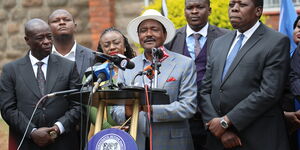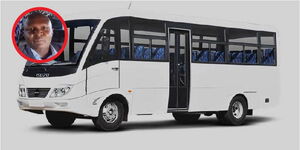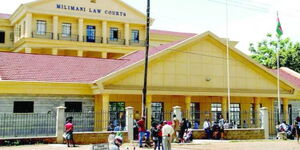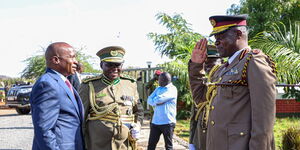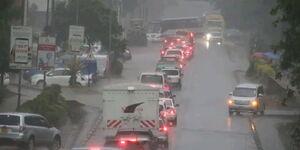Extrajudicial killings have become a contentious battleground, where politicians and National Police Service members trade accusations, often resorting to outrageous claims.
The latest statement being that of Inspector General of Police Japhet Koome who claimed that police officers killed no one in Kisumu during the anti-government protests staged by Azimio Coalition.
Instead, IG Koome shifted the blame to politicians who he accused of doing everything in their power to taint the image of the police.
Koome's assertions are a contradiction to the account given by a civil society group which observed that at least 30 people were brutally murdered, some of who had already submitted to the police.
On Wednesday, August 9, the Liberal Democratic Party ( LDP) appealed to President William Ruto to sack the Inspector General of Police, noting that the claim by Koome that the opposition hired bodies to gain political sympathy is sad, disrespectful, inhumane and is an insult to the bereaved families.
"Police brutality during the demonstrations has been condemned by Kenyans, religious groups and the international community.
The statement by Japhet Koome is not only reckless but is also an indication that Kenya has become a police state.
"Evidence of police brutality and extra-judicial killings by the police are clearly documented by Human rights groups, civil society and the media," the Party claimed.
1. Hired Dead Bodies Japhet Koome
On Tuesday, August 9, Inspector General of Police Japhet Koome claimed that politicians hired dead bodies from mortuaries and posted pictures of them on social media to make it seem like the police were responsible for the deaths.
Koome claimed that the politicians conspired with morgue attendants to take the pictures, and did so in order to tarnish the image of the police force.
"The information I have is that they (politicians) go to some of the mortuaries and compromise some of the workers there,” the IG claimed.
“People who died of some illness, people who died maybe of an accident or other causes, they (politicians) take photographs of such bodies and blame on police. But we are not in the business of all the time responding to politicians," Koome claimed.
He also claimed that the police have been doing their job of maintaining law and order, and that they are not responsible for the deaths.
The accusations came after the police were criticised for using excessive force during anti-government protests.
“Ours is to discharge our mandate that is to maintain law and order, protecting life and property, politicians all they know is to talk and spread propaganda,” IG Koome stated.
2. Eric Kiraithe Rambo Movie in Kisumu
At the height of the 2007/8 Post Election Violence, the former Police Spokesperson Eric Kiraithe shocked the world when he sensationally claimed that the point-blank murder of two protesters, recorded by the media in Kisumu was a scripted gimmick by politicians.
The then Police Spokesperson described the incident as 'Rambo movie style' theatrics designed to gain international sympathy.
In the incident, a 24-year-old Police Constable was recorded shooting before proceeding to kick two protesters as they ran away from the antiriot squad deployed in the region.
Later in February 2016, Eric Kiraithe was appointed to the position of National Government Spokesperson.
3. The Killing of Officer Erastus Kirui Chemorei
Erastus Chemorei, a police superintendent, was murdered in cold blood by his fellow officers in February 2005. He was killed at his home in Eldoret, Kenya, in front of his wife and children.
Chemorei had been tasked with guarding a large quantity of cocaine that had been seized by the police in a raid on a private villa in Malindi. The cocaine was worth an estimated Ksh6.4 billion.
Chemorei was seen as a threat to those who wanted to get their hands on cocaine. He was honest and trustworthy, and he was not afraid to speak out against corruption.
On the day of his murder, Chemorei was visited by a group of police officers. The officers claimed that they had a warrant for his arrest. Chemorei allowed them into his home, but he was immediately surrounded and shot dead.
The officers claimed that Chemorei resisted arrest and tried to grab a gun from them. However, witnesses said that Chemorei was unarmed and posed no threat to the officers.
Activists claimed that Chemorei's murder was a clear case of police brutality. He was murdered by his own colleagues for simply doing his job.
Later the then National Police Force claimed that Chemorei was a hardcore criminal who met his death as a result of his illegal activities.
"Alikuwa jambazi sugu (he was a hardcore criminal)," the police claimed.
4. The Kianjokoma Brothers
Popularly known as Kianjokoma brothers, Benson Njiru Ndwiga, 22, and Emmanuel Mutura Ndwiga, 19, were killed by police officers in Embu County on August 1, 2021.
The brothers were on their way home when they were stopped by police officers who were enforcing the curfew imposed by the government to curb the spread of the COVID-19 Pandemic.
The officers claimed that the brothers were drunk and disorderly, and arrested them.
The initial police report indicated that the brothers jumped out of the police van and died instantly, but it was later revealed that the brothers were taken to the Manyatta Police Station, where they were allegedly beaten and tortured.
The following day, the bodies of the brothers were found at the Embu Level 5 Hospital morgue. They had sustained serious injuries, including multiple fractures and internal bleeding.
The post-mortem examination concluded that the brothers had died of blunt force trauma.
As a result, six police officers were charged with the murder of the two Brothers. The trial of the six officers has been ongoing for the last two years.
The deaths of the Kianjokoma Brothers sparked outrage in the country as citizens highlighted the issue of police brutality in Kenya.
"The Kianjokoma Brothers were two young men with their whole lives ahead of them. They were killed in cold blood by police officers who were supposed to protect them. Their deaths are a tragedy, and they must not be forgotten," the Law Society of Kenya said.
5. Kenol Robbery Suspect
A robbery suspect was gunned down by police in Murang'a County on Tuesday, March, 17, after allegedly being subdued and arrested.
Before the photo of his arrest emerged on the internet, the National Police Service claimed that the suspect had attempted to open fire on officers.
A post-mortem examination, carried out by a team of pathologists from Murang'a Level 5 Hospital, revealed that the assailant sustained a total of nine gunshot wounds, with three of them targeted at the head region. The pathologists determined that the robber's demise was instantaneous, attributed to the severe gunshot injuries.
Investigations later revealed that the robber, who was not identified, was part of a gang that robbed a businessman of Ksh100,000 in Kenol Town. The gang was chased by the police and the robber was shot dead in a sugarcane plantation.
Following the new revelations, the police noted that they were investigating the incident and that they would take action against any officers involved in the shooting if the probe concluded that excessive force was used.
However, the investigations never amounted to much.

